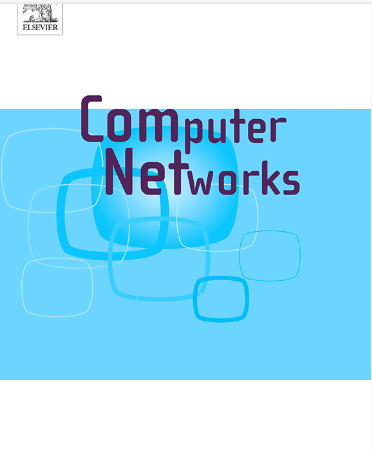IF 4.4
2区 计算机科学
Q1 COMPUTER SCIENCE, HARDWARE & ARCHITECTURE
引用次数: 0
摘要
在线提供 物联网(IoT)在无线和移动网络中的迅速扩展要求采用新方法进行高效数据传输和管理。传统的基于 IP 的网络架构难以满足物联网高速、低延迟和可扩展的要求。命名数据网络(NDN)是一种以内容为中心的网络范例,它基于内容名称而非设备地址进行数据检索,提供了一种替代方案。然而,尽管 NDN 在减少延迟和改善数据传播方面具有显著优势,但由于其在动态资源分配、路由效率和不确定网络条件下的鲁棒性方面面临挑战,其与边缘计算的集成在实时物联网应用中仍未达到最佳状态。本文提出了一种新型自适应 NDN 边缘计算框架,可动态优化数据检索、缓存和计算资源分配。与之前仅关注理论模型或静态配置的研究不同,我们的框架引入了一个多目标优化模型,用于平衡物联网环境中的延迟、可靠性和能效。此外,我们还制定了一种稳健的优化方法,以确保网络对不可预测的流量激增、拓扑变化和边缘节点故障的恢复能力。通过大量的仿真和实际案例研究,我们证明,与传统的 NDN 和边缘计算方法相比,所提出的集成方法显著改善了延迟(最多减少 25%)、能效(提高 15%)和缓存命中率(提高 20%)。这项工作为正在进行的研究做出了贡献,它提供了一个可扩展、自适应和有弹性的 NDN 边缘计算框架,在解决现有解决方案的关键局限性的同时,增强了物联网数据处理能力。未来的工作重点将放在安全增强和区块链的集成上,以便在物联网生态系统中实现分散式信任管理。本文章由计算机程序翻译,如有差异,请以英文原文为准。
Enhancing IoT performance in wireless and mobile networks through named data networking (NDN) and edge computing integration
Available online The rapid expansion of the Internet of Things (IoT) in wireless and mobile networks demands novel approaches for efficient data transmission and management. Traditional IP-based networking architectures struggle to meet the high-speed, low-latency, and scalable requirements of IoT. Named Data Networking (NDN), a content-centric networking paradigm, provides an alternative by focusing on data retrieval based on content names rather than device addresses. However, while NDN offers significant advantages in reducing latency and improving data dissemination, its integration with edge computing for real-time IoT applications remains suboptimal due to challenges in dynamic resource allocation, routing efficiency, and robustness under uncertain network conditions. This paper proposes a novel adaptive NDN-Edge Computing framework that dynamically optimizes data retrieval, caching, and computational resource allocation. Unlike prior studies that focus solely on theoretical models or static configurations, our framework introduces a multi-objective optimization model for balancing latency, reliability, and energy efficiency in IoT environments. Additionally, we formulate a robust optimization approach to ensure network resilience against unpredictable traffic surges, topology changes, and edge node failures. Through extensive simulations and real-world case studies, we demonstrate that the proposed integration significantly improves latency (up to 25 % reduction), energy efficiency (15 % improvement), and cache hit ratio (20 % increase) compared to conventional NDN and edge computing approaches. This work contributes to the ongoing research by providing a scalable, adaptive, and resilient NDN-edge computing framework that enhances IoT data processing while addressing critical limitations of existing solutions. Future work will focus on security enhancements and the integration of blockchain for decentralized trust management in IoT ecosystems.
求助全文
通过发布文献求助,成功后即可免费获取论文全文。
去求助
来源期刊

Computer Networks
工程技术-电信学
CiteScore
10.80
自引率
3.60%
发文量
434
审稿时长
8.6 months
期刊介绍:
Computer Networks is an international, archival journal providing a publication vehicle for complete coverage of all topics of interest to those involved in the computer communications networking area. The audience includes researchers, managers and operators of networks as well as designers and implementors. The Editorial Board will consider any material for publication that is of interest to those groups.
 求助内容:
求助内容: 应助结果提醒方式:
应助结果提醒方式:


